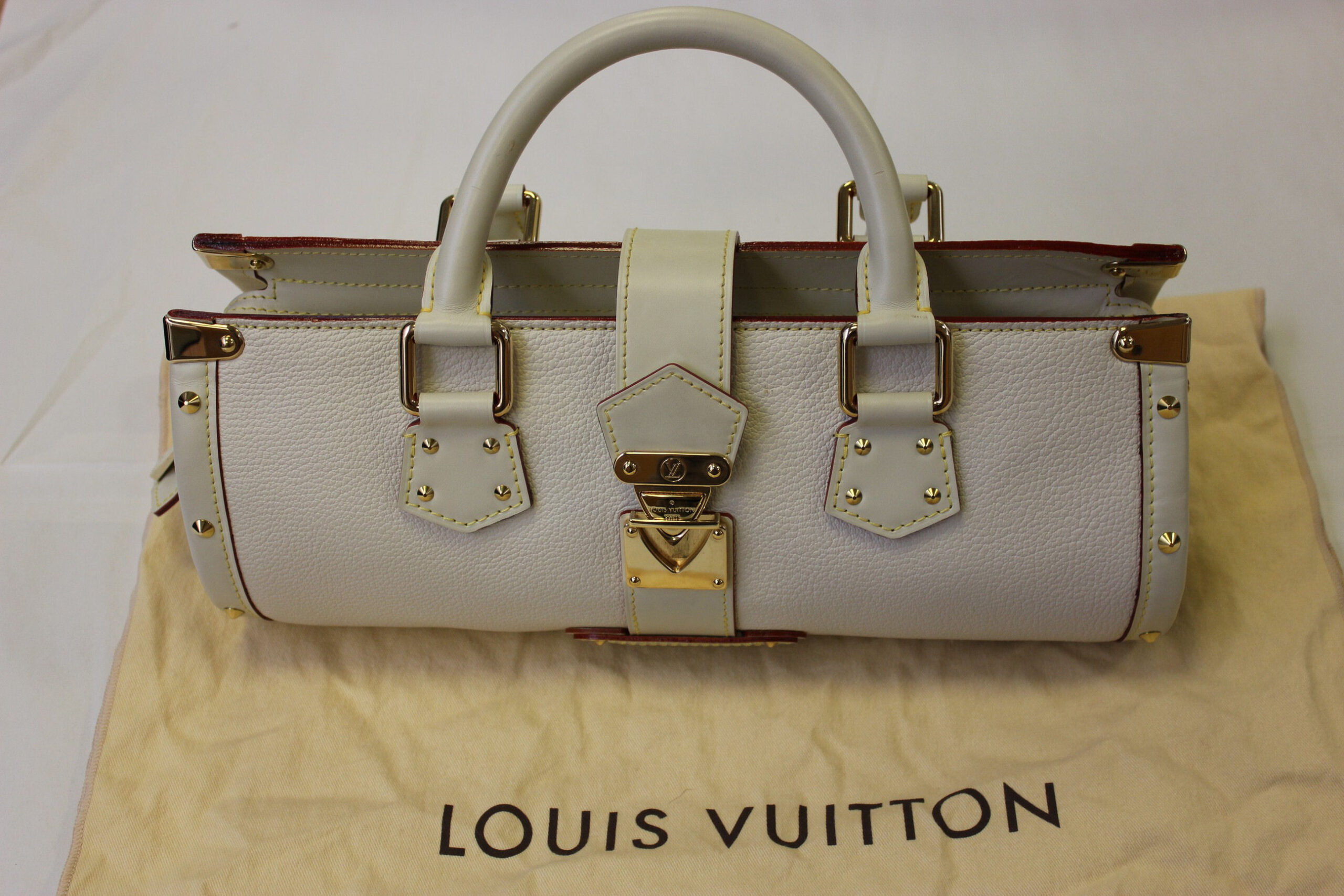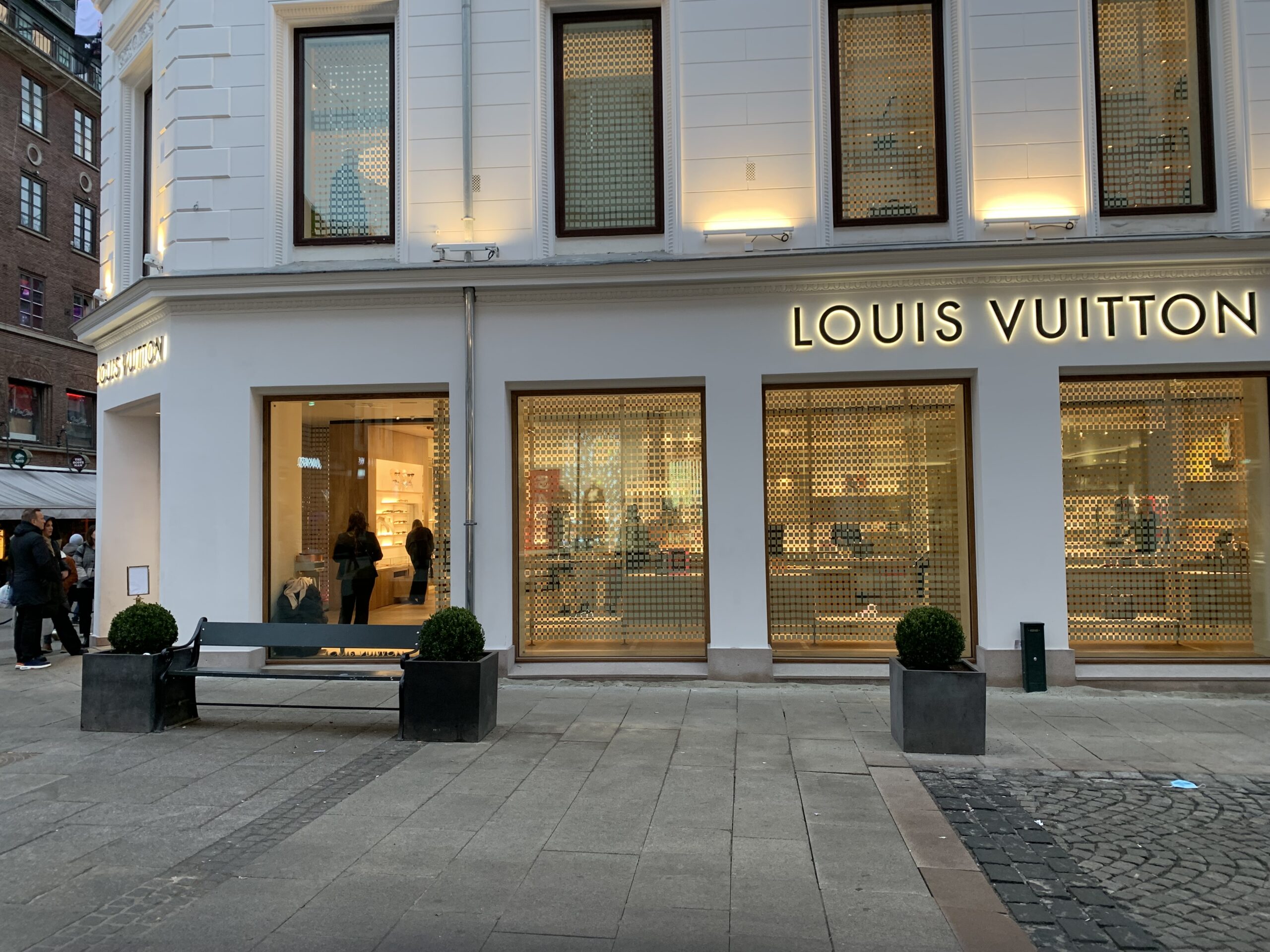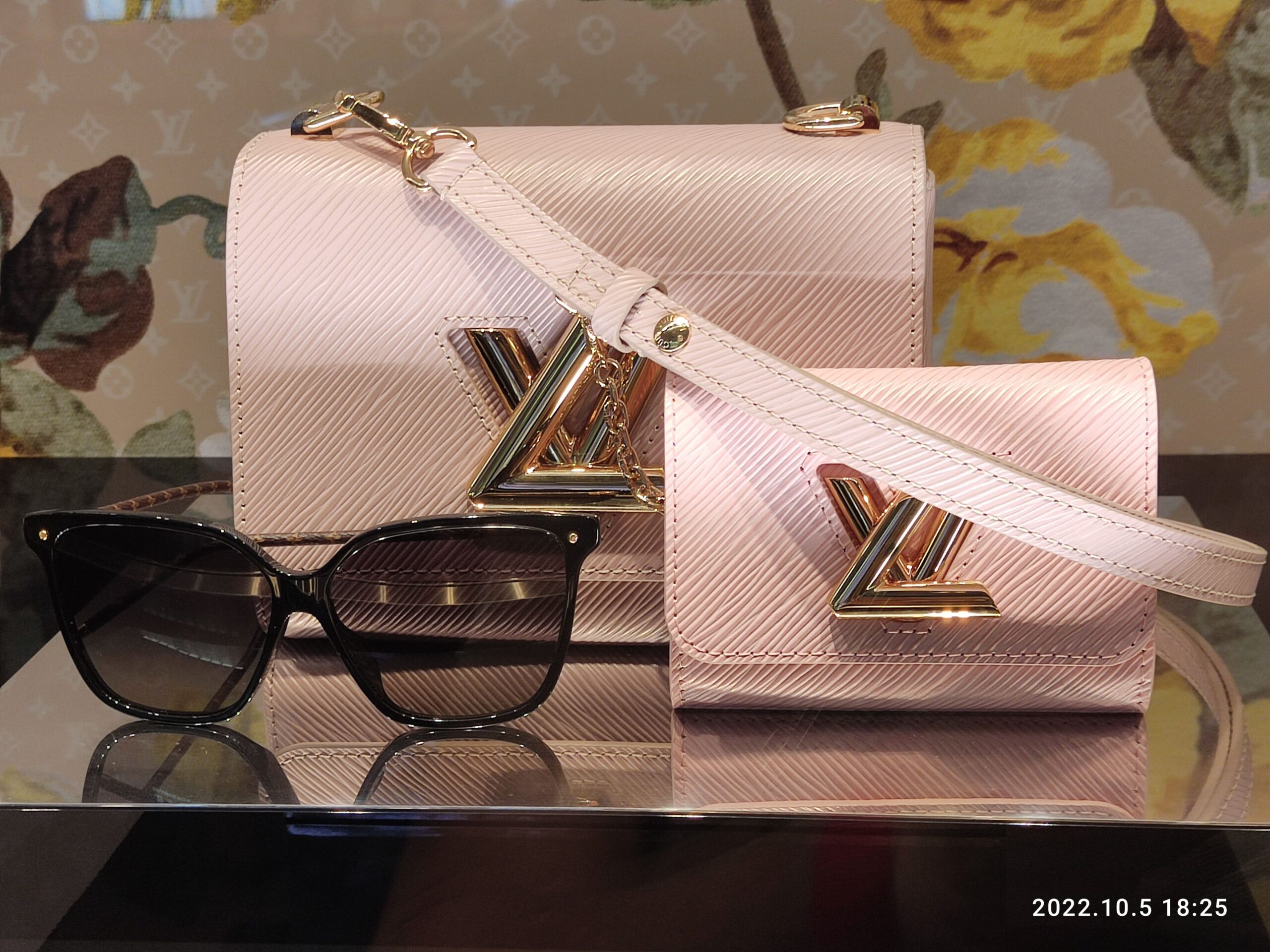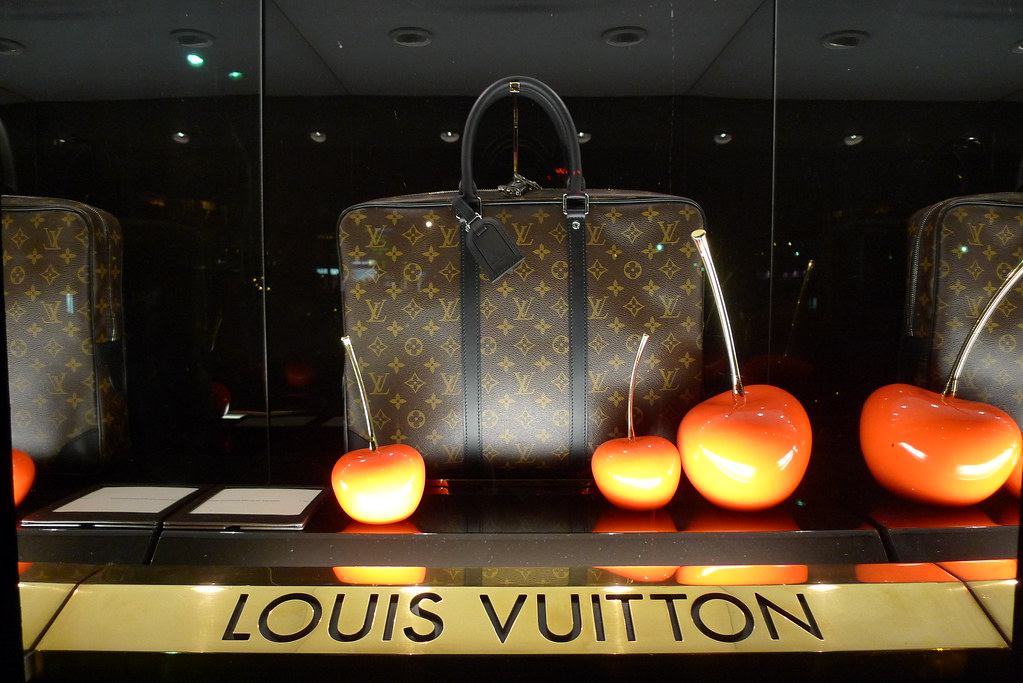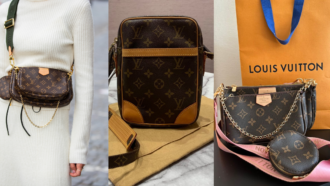Louis Vuitton Handbags: A Brief History And Selling Them
- 1 History of Louis Vuitton
- 1.1 1. Foundation of the House of Louis Vuitton (1854):
- 1.2 2. Iconic Monogram Canvas (1896):
- 1.3 3. Expansion and International Recognition (Late 19th to Early 20th Century):
- 1.4 4. Art of Travel and Special Orders (20th Century):
- 1.5 5. Evolution into Fashion (20th Century):
- 1.6 6. Collaboration with Designers (Late 20th Century to Present):
- 1.7 7. Marc Jacobs Era (1997–2013):
- 1.8 8. Nicolas Ghesquière and Continued Innovation (2013–Present):
- 1.9 9. Sustainable Initiatives (21st Century):
- 1.10 10. Enduring Legacy:
- 2 What Makes Louis Vuitton Handbags Differ From Other Brands
- 2.1 1. Iconic Monogram Canvas:
- 2.2 2. Meticulous Craftsmanship:
- 2.3 3. Timeless Design:
- 2.4 4. Innovation and Collaboration:
- 2.5 5. Heritage and Tradition:
- 2.6 6. Exclusivity:
- 3 Maximize Cash from Your Luxury Closet: Selling Your Louis Vuitton Handbags
- 3.1 The Enduring Appeal of Louis Vuitton
- 3.2 Steps to Prepare for Sale
- 3.3 Where to Sell Your Louis Vuitton
- 3.4 Pricing It Right
- 3.5 The Importance of Authenticity
- 3.6 Marketing Your Louis Vuitton
- 4 Conclusion
The history of Louis Vuitton handbags is a tale of craftsmanship, innovation, and enduring elegance that began in the mid-19th century.
History of Louis Vuitton
1. Foundation of the House of Louis Vuitton (1854):
Louis Vuitton, the man behind the brand, founded his eponymous company in Paris in 1854. Initially, he specialized in crafting luxury trunks and luggage. His creations were distinguished by their lightweight design and innovative flat-top trunks, which contrasted with the rounded trunks popular at the time.
2. Iconic Monogram Canvas (1896):
In 1896, Louis Vuitton’s son, Georges Vuitton, introduced the iconic monogram canvas to combat counterfeiting. The design featured interlocking “LV” initials and delicate floral motifs, creating a pattern that would become synonymous with the brand’s identity and luxury.
3. Expansion and International Recognition (Late 19th to Early 20th Century):
Louis Vuitton’s reputation for quality craftsmanship and innovative design led to rapid expansion. The brand opened its first international store in London in 1885, followed by locations in New York, Bombay, and other major cities. By the early 20th century, Louis Vuitton had become a symbol of luxury and sophistication around the world.
4. Art of Travel and Special Orders (20th Century):
Throughout the 20th century, Louis Vuitton continued to innovate in the realm of travel. The brand introduced special-order services, allowing clients to customize their trunks and luggage. This dedication to craftsmanship and personalization contributed to Louis Vuitton’s reputation as a purveyor of bespoke luxury.
5. Evolution into Fashion (20th Century):
As travel habits changed, Louis Vuitton adapted by expanding its product line. In the 20th century, the brand transitioned from a focus on travel goods to becoming a full-fledged fashion house. The introduction of handbags marked a significant evolution, with the Speedy bag debuting in the 1930s and quickly becoming a classic.
6. Collaboration with Designers (Late 20th Century to Present):
In the late 20th century and into the 21st century, Louis Vuitton embraced collaborations with contemporary artists and designers. Notable partnerships include collaborations with Stephen Sprouse, Takashi Murakami, and Yayoi Kusama, injecting a fresh and modern aesthetic into the brand’s traditional luxury.
7. Marc Jacobs Era (1997–2013):
Under the creative direction of Marc Jacobs, Louis Vuitton further solidified its status as a global fashion powerhouse. Jacobs introduced ready-to-wear collections and continued the brand’s tradition of innovation, creating memorable runway shows and expanding the product range to include an array of accessories, including an extensive line of handbags.
8. Nicolas Ghesquière and Continued Innovation (2013–Present):
Nicolas Ghesquière took the creative helm in 2013, bringing his modern and avant-garde sensibilities to Louis Vuitton. Under his leadership, the brand has continued to evolve while maintaining its core values of craftsmanship and sophistication. New handbag designs like the Petite Malle and Capucines have become instant classics.
9. Sustainable Initiatives (21st Century):
In response to growing environmental concerns, Louis Vuitton has taken steps towards sustainability. The brand has introduced initiatives to reduce its environmental impact, such as sourcing ethical materials and promoting responsible manufacturing practices.
10. Enduring Legacy:
As we move into the 21st century, Louis Vuitton handbags continue to symbolize luxury, craftsmanship, and timeless style. The brand’s ability to balance tradition with innovation ensures that Louis Vuitton remains a prominent and influential force in the world of fashion.
What Makes Louis Vuitton Handbags Differ From Other Brands
1. Iconic Monogram Canvas:
At the heart of Louis Vuitton’s visual identity is the iconic monogram canvas, a distinctive pattern featuring interlocking LV initials and elegant floral motifs. This instantly recognizable design symbolizes sophistication and opulence, setting Louis Vuitton apart from other luxury brands.
2. Meticulous Craftsmanship:
Louis Vuitton’s commitment to quality craftsmanship is evident in every handbag it produces. Skilled artisans meticulously create each piece, ensuring that attention to detail and durability are paramount. The brand’s use of high-quality materials, including luxurious leather and durable canvas, further reinforces its dedication to crafting enduring products.
3. Timeless Design:
Louis Vuitton handbags boast timeless, classic designs that transcend fleeting fashion trends. The brand’s commitment to creating pieces that stand the test of time contributes to the longevity of its products, making them not just fashion accessories but timeless investments.
4. Innovation and Collaboration:
While rooted in tradition, Louis Vuitton embraces innovation and collaborates with contemporary artists and designers. Limited edition collections and partnerships bring a modern and fresh appeal to the brand, showcasing its ability to evolve while maintaining its core identity.
5. Heritage and Tradition:
Louis Vuitton’s rich history, dating back to the 19th century, adds to the allure of its handbags. Initially created to combat counterfeiting, the iconic LV monogram has evolved into a symbol of authenticity, craftsmanship, and a nod to the brand’s storied heritage.
6. Exclusivity:
Maintaining a sense of exclusivity is integral to the Louis Vuitton brand. By controlling distribution and avoiding mass production, the brand enhances the desirability of its products, positioning them as coveted luxury items.
7. Brand Recognition: Louis Vuitton’s globally recognized monogram and its reputation as a leading luxury brand contributes to its unmatched brand recognition. Owning a Louis Vuitton handbag is not just a fashion statement; it is a symbol of success and refined taste.
8. Resale Value: Louis Vuitton handbags often retain and, in some cases, appreciate over time. This unique quality further solidifies the investment-worthy nature of Louis Vuitton products, making them sought-after not only for their aesthetic appeal but also as valuable assets.
Maximize Cash from Your Luxury Closet: Selling Your Louis Vuitton Handbags
Have you ever thought, “I want to sell my Louis Vuitton purse for some extra cash”? You’re not alone. Many fashion enthusiasts are turning their luxury handbags into a source of income. In this comprehensive guide, we’ll explore how to sell used Louis Vuitton bags effectively, ensuring you get top dollar for your luxury item.
The Enduring Appeal of Louis Vuitton
Louis Vuitton is more than just a brand; it’s a legacy of unmatched craftsmanship and timeless style. The high demand and enduring appeal make it easier to sell Louis Vuitton for cash, especially if your piece is in good condition or a sought-after model.
Steps to Prepare for Sale
To successfully sell your Louis Vuitton purse, it’s crucial to present it in the best light. Clean it meticulously, and if possible, retain all original packaging and documentation, including the receipt and authenticity card. This not only enhances the value but also assures potential buyers of its authenticity.
Where to Sell Your Louis Vuitton
Choosing the right platform is key when you decide to sell a used Louis Vuitton bag. Online luxury marketplaces, reputable consignment stores, and auction sites are excellent options. These platforms cater to a clientele that appreciates luxury and understands the value of Louis Vuitton items.
Pricing It Right
Setting a competitive price is crucial. Research the current market value of similar Louis Vuitton models to determine a fair and attractive price point. Remember, limited edition pieces can command higher prices.
The Importance of Authenticity
When you sell Louis Vuitton for cash, proving its authenticity is non-negotiable. Include all authenticity cards, serial numbers, and purchase receipts in your listing. Authenticity not only reassures buyers but can also significantly increase the value of your handbag.
Marketing Your Louis Vuitton
Effective marketing is the final step in the selling process. Utilize social media, fashion blogs, and word of mouth to spread the word about your sale. High-quality images and detailed descriptions can attract more potential buyers.
Conclusion
Selling your Louis Vuitton handbag can be both empowering and profitable. With the right preparation, platform, and pricing, you can turn your luxury fashion into cash. Remember, the iconic status of Louis Vuitton means there will always be a demand for your well-cared-for handbags.

